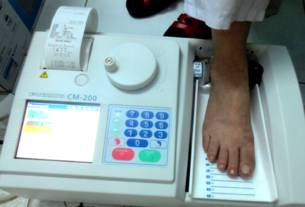Getting a good night’s sleep is essential for overall health and well-being, and a supportive mattress can play a crucial role in achieving that goal. A mattress that provides adequate support can help to reduce back pain and improve sleep quality, leading to a more rested and energized you. In this article, we will discuss the role of mattress support in reducing back pain and improving sleep quality, and provide tips for choosing the right mattress for your needs.
The Importance of Mattress Support
When it comes to reducing back pain and improving sleep quality, the level of support provided by a mattress is crucial. A supportive mattress can help to distribute your body weight evenly and maintain proper spinal alignment, reducing pressure on your back and reducing the likelihood of pain and discomfort.
Conversely, a mattress that does not provide adequate support can lead to poor sleep quality and Mattress for back pain. If your mattress is too soft, your body may sink too deeply into the mattress, causing your spine to curve unnaturally and placing strain on your back muscles. If your mattress is too firm, it may not contour to the natural curves of your body, causing pressure points and discomfort.
Tips for Choosing a Supportive Mattress
When choosing a mattress, there are several factors to consider to ensure that it provides adequate support for your body. Here are some tips to keep in mind:
- Choose the right firmness level: The level of firmness you need will depend on your sleeping position, body type, and personal preferences. Generally, side sleepers may prefer a softer mattress that contours to their curves, while back and stomach sleepers may prefer a firmer mattress that provides more support.
- Look for good quality materials: A high-quality mattress made from durable, supportive materials will provide better support and last longer. Look for materials like high-density foam, latex, or coils, and avoid low-quality materials that may lose their shape and support over time.
- Consider the mattress type: Different types of mattresses provide different levels of support. For example, memory foam mattresses contour to your body and provide consistent support, while innerspring mattresses provide more bounce and may not contour to your body as well. Consider your needs and preferences when choosing a mattress type.
- Get the right size: Choosing the right size mattress is important for ensuring adequate support. A mattress that is too small may not provide enough support for your body, while a mattress that is too large may not fit properly in your bed frame.
- Consider additional support features: Some mattresses come with additional support features, such as built-in lumbar support or adjustable firmness settings. These features can be beneficial for those with specific support needs or preferences.
- Use proper sleeping posture: In addition to a supportive mattress, proper sleeping posture can help to reduce back pain and improve sleep quality. For example, sleeping on your back with a pillow under your knees can help to maintain proper spinal alignment, while sleeping on your stomach can place strain on your back muscles.
- Stretch regularly: Incorporating regular stretching and exercise into your routine can help to improve flexibility and reduce back pain. Simple stretches like the hamstring stretch, hip flexor stretch, and cat-cow stretch can be done in the comfort of your own home.
- Consider a supportive pillow: In addition to a supportive mattress, a supportive pillow can help to reduce neck pain and improve sleep quality. Look for a pillow that supports the natural curve of your neck and keeps your head in alignment with your spine.
- Practice good sleep hygiene: Getting enough sleep and practicing good sleep hygiene can also help to reduce back pain and improve sleep quality. Aim for 7-9 hours of sleep per night, and create a comfortable and relaxing sleep environment by keeping your bedroom cool, dark, and quiet.
- Consider a mattress topper: If your current mattress is not providing adequate support, a mattress topper can be a cost-effective way to add extra support and cushioning. Look for a topper made from high-density foam or latex for optimal support.
By taking these steps and choosing a supportive mattress, you can reduce back pain and improve sleep quality, leading to a happier, healthier you. Don’t be afraid to take the time to research and choose the right mattress for your needs – the benefits to your health and well-being are well worth it.



